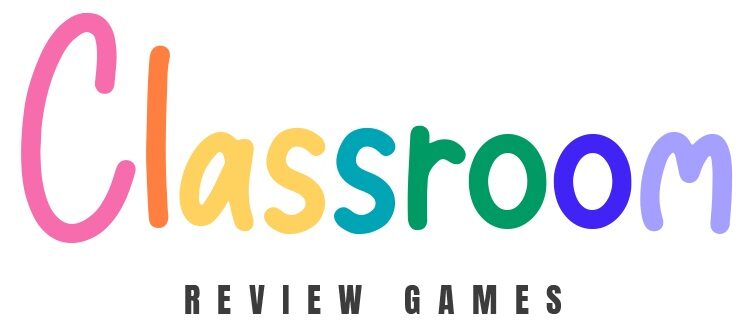10 Conflict Resolution Games for Students
Conflict is a natural part of human interaction, and learning to navigate it effectively is a crucial skill. Conflict resolution games are an engaging way to develop these skills in a controlled, safe classroom environment. These games encourage students to understand different perspectives, communicate effectively, and find mutually beneficial solutions.
1. The Peaceful Negotiator
Materials Needed:
- A deck of cards with various scenarios written on them
- A timer
How to Play the Game:
Students are divided into pairs, and each pair is given a scenario card. The scenarios describe a conflict situation that needs resolution. The pairs have a set amount of time, say 10 minutes, to discuss the scenario and come up with a resolution that satisfies both parties.
Example:
For instance, the scenario might involve two roommates disagreeing on how to divide chores. The students need to discuss, negotiate, and find a fair division of tasks that considers both their preferences and schedules.
2. The Role Reversal
Materials Needed:
- Scenario cards
- Props or costumes for role-play (optional)
How to Play the Game:
In this game, students are given a conflict scenario and assigned roles that are opposite to their real-life positions or opinions. They then have to argue or defend the perspective of the role they’ve been given. This game encourages empathy and understanding of the other side’s viewpoint.
Example:
Imagine a scenario where there’s a conflict between an employee and a manager over work hours. A student who is actually a manager in real life would take on the employee’s role, advocating for more flexible hours, while another might play the manager, emphasizing the need for consistent work schedules.
3. The Mediator
Materials Needed:
- Scenario cards detailing conflicts
- A “mediator” badge or identifier
How to Play the Game:
One student is chosen to be the mediator, and the rest are split into two groups, each representing a side of the conflict. The mediator’s role is to facilitate discussion between the two groups, helping them understand each other’s points of view and guiding them towards a resolution.
Example:
A scenario could involve a community conflict over park usage. One group wants the park to be dog-friendly, while the other prefers a pet-free zone. The mediator helps each group articulate their concerns and needs, guiding them towards a compromise, such as designated times or areas for dogs.
4. The Collaborative Puzzle
Materials Needed:
- A physical puzzle or a digital puzzle app
- A timer
How to Play the Game:
Students are divided into small groups and given a puzzle to solve within a certain time frame. The catch is that each member holds some pieces of the puzzle and information on how to solve it, necessitating collaboration and communication to complete the task.
Example:
Each group receives a puzzle that represents a project with missing elements. Students must discuss and negotiate the best way to fit their pieces together, simulating the need for teamwork and effective communication in conflict resolution.
5. The Feedback Circle

Materials Needed:
- A “feedback ball” or any small, tossable object
- A comfortable, circle-seating arrangement
How to Play the Game:
Students sit in a circle, and the facilitator introduces a topic for feedback, such as a recent group activity or project. The person holding the feedback ball shares their thoughts and then tosses the ball to another students, who then shares their feedback. This game promotes open communication and constructive feedback.
Example:
After a group project, students sit in a circle. The first person might share what they thought went well and what could be improved, offering specific, constructive feedback. The ball is then passed to the next person, who adds their perspective, fostering a culture of open dialogue and continuous improvement.
6. The Island Survival
Materials Needed:
- Cards detailing survival challenges
- Cards representing different survival items
How to Play the Game:
Students are divided into groups and given a scenario where they are stranded on a deserted island. Each group receives a set of survival item cards, but not all items are available to every group. The challenge is for students to negotiate with other groups to obtain the items they need to survive, using only the resources they currently have.
Example:
One group might have an excess of “water” cards but no “shelter” cards, while another group has the opposite. Students must discuss, negotiate, and trade to ensure each group has a balanced set of resources to “survive” the island, fostering cooperation and understanding of mutual benefits.
7. The Time Capsule
Materials Needed:
- A box or container to serve as the time capsule
- Paper and pens for each student
How to Play the Game:
Students are asked to imagine their classroom is a community that must choose five essential items to place in a time capsule for future generations. Each student writes down one item they believe is crucial and explains their choice. The group then discusses all suggestions and must come to a consensus on the five items to include in the capsule.
Example:
Students might suggest items like a textbook, a piece of technology, an artwork, a plant seed, or a letter describing current times. Through discussion, they learn to listen to others’ perspectives, articulate their thoughts, and compromise to reach a decision that reflects the collective values of the group.
8. The Bridge Builders
Materials Needed:
- Building materials (e.g., sticks, straws, tape)
- Specifications for a “bridge” that needs to be built
How to Play the Game:
In this game, students are divided into teams and tasked with building a bridge that meets certain criteria, such as length, width, and weight capacity. Each team has only a limited selection of materials and must negotiate with other teams to acquire the necessary items to complete their bridge.
Example:
One team might have a surplus of tape but not enough straws, while another team has the opposite. Students must communicate and negotiate trades, emphasizing the importance of diplomacy and strategic thinking to achieve their goals.
9. The Community Council
Materials Needed:
- Scenario cards describing various community issues
- Voting ballots
How to Play the Game:
Students form a “community council” tasked with resolving issues presented on the scenario cards. Each issue requires a decision that affects the community, such as implementing a curfew for teenagers or building a new park. Students discuss the pros and cons of each decision and then vote on the best course of action.
Example:
A scenario card might describe a debate over whether to allocate funds for a new library or a sports facility. Students must consider various factors, such as community needs, budget constraints, and long-term benefits, before casting their votes, teaching them about civic responsibility and the complexities of community decision-making.
10. The Peace Talks
Materials Needed:
- Role cards assigning different characters and viewpoints
- A “peace treaty” template
How to Play the Game:
In this role-playing game, students assume the identities of various characters involved in a fictional conflict, such as leaders of warring countries or representatives of conflicting community groups. The goal is for students to negotiate a peace treaty that addresses the concerns and needs of all parties.
Example:
Students might represent different countries with border disputes or communities arguing over resource allocation. Through role-play, they explore the art of diplomacy, the importance of empathy in understanding opposing views, and the skills needed to craft agreements that everyone can support.

